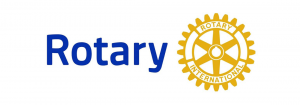George Matthews - Face to Face - Air Traffic Control
Thu, Apr 28th 2022 at 6:00 am - 8:00 am
George Matthews - Face to Face - Air Traffic Control

Air Traffic Control Management
Nowadays we think nothing of boarding a plane to fly half way round the world, with as little concern as if we were getting on to a bus or train. But, as Rotarian George Matthews explained, behind the scenes there is complex network of air traffic management at work ensuring our safety. In his talk, George described the evolution of this system that now controls the movement of tens of thousands of aircraft every day. Crucial to the overall safety of passengers across the world are the standards established by the International Civil Aviation Organisation (ICAO) that are accepted worldwide as the benchmarks for flight crew, aircraft maintenance, communications and navigation.
In the UK, the Civil Aviation Authority is the agency appointed by the government to oversee all aspects of aviation. In terms of the management of air traffic it is the National Air Traffic Services (NATS) that carries the responsibility for controlling air traffic and the infrastructure on which that control relies. The responsibility for air traffic control in the UK is divided into two Flight Information Regions: the northern, Scottish sector is controlled from a location near Prestwick airport; the southern sector, formerly based at West Drayton, is now controlled from Swanwick, close to Portsmouth. Together they are daily responsible for some 6,000 aircraft movements carrying 600,000 passengers. The system primarily uses radar to track aircraft, allowing controllers to maintain appropriate separation between aircraft to ensure safety. Since its introduction just before World War Two, the technology, initially able to identify the position but not the height of aircraft, has developed significantly to allow a variety of information to be received, including a prediction of where an aircraft will be in ten minutes time.
George gave several video illustrations of the extent of air traffic within the UK and of that flying to and from America, where, in the latter case, the choice of route is affected by the position and speed of the jet stream which can add (or reduce) an aircraft’s ground speed by as much as 150 to 250 mph.
Rotary Junior Photographer Competition 2022: The Club has launched a competition for young photographers who can compete in three categories: up to age 10; 11-13; and 14-18. The subject for this year’s competition is ‘The Colours of Nature’. The judges will base their assessments on originality, composition and technique. There will be three prizes in each category: 1st prize: £70, 2nd prize: £30; 3rd prize: £20. Each entrant can submit up to three photographs. The final date for entries is 31 May 2022. Further details of the competition can be found at https://www.rotary-ribi.org/clubs/page.php?PgID=869783&ClubID=16
.jpg)







